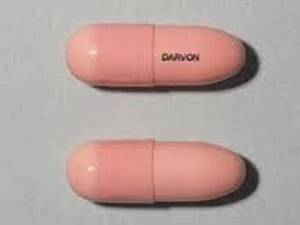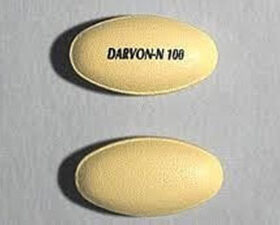- Your cart is empty
- Continue Shopping

Shop
Buy Darvon Online

Buy Darvon Online offers a super-fast delivery service for purchasing Darvon medication. Say No to long waits and Order now for Fast Felief.
Introduction
Darvon (dextropropoxyphene) is a synthetic opioid pain medication that was first introduced by Eli Lilly and Company in 1957. It quickly became one of the most widely prescribed painkillers in the United States due to its potency and relatively mild side effects compared to other opioids at the time.
Darvon was initially marketed as a non-addictive alternative to morphine and other opioid pain medications. However, it did possess many qualities similar to morphine including analgesia and euphoria.
By the late 1960s it was the most prescribed painkiller in the U.S. with over 100 million prescriptions written per year. This widespread use continued for decades until safety concerns emerged regarding addiction and overdose potential.
Chemical Properties
Darvon contains the active ingredient propoxyphene, which is an opioid pain medication. Propoxyphene is a synthetic compound and chemically it is known as α-(dimethylamino)-4-methyl-3-methyl-2-phenylbutan-2-ol propanoate.
The chemical structure of propoxyphene consists of a diphenyl ether backbone substituted with a propionate group at one end and an amino group with two methyl substituents at the other end. This gives propoxyphene weak mu-opioid receptor agonist activity, which provides pain relief.
Propoxyphene is similar in structure to methadone, another opioid medication. However, propoxyphene is much weaker as an opioid agonist than methadone.
Medical Uses
Darvon (propoxyphene) was approved in the United States in 1957 as a pain reliever. It was initially marketed as a less addictive alternative to other opioid pain medications. Darvon was commonly prescribed by doctors to treat mild to moderate pain associated with the following conditions:
- Arthritis
- Back pain
- Dental pain
- Muscle pain
- Migraines
- Menstrual cramps
Side Effects
Darvon and its generic formulations contain propoxyphene, an opioid pain reliever that works in the brain to decrease the body’s perception of pain. While effective for treating mild to moderate pain, propoxyphene carries a number of concerning side effects and risks.
The most common side effects of Darvon and propoxyphene include:
- Drowsiness
- Dizziness
- Nausea
- Vomiting
- Constipation
- Blurred vision
- Confusion
- Euphoria
More serious side effects may occur, especially when taken at high doses or for prolonged periods. These include:
- Seizures
- Low blood pressure
- Slowed or difficult breathing
- Coma
- Death
Propoxyphene has a narrow margin between therapeutic and toxic doses. Overdose can occur when taken in excess or combined with alcohol or other drugs that depress the central nervous system. Signs of overdose include extreme drowsiness, pinpoint pupils, cold clammy skin, and slowed breathing.
Due to its addictive nature and risk of overdose, Darvon requires careful administration and monitoring by a physician. However, its side effects can still occur when taken as prescribed. Patients should be aware of the risks and report any concerning symptoms to their doctor immediately.
Addiction Potential
Darvon has a high potential for dependence and abuse. The active ingredient propoxyphene is an opioid that works similarly to morphine. It binds to opioid receptors in the brain that regulate pain and pleasure.
With regular use, tolerance can develop quickly, requiring higher doses to achieve the same effect. Stopping suddenly can lead to withdrawal symptoms like anxiety, sweating, muscle cramps, diarrhea, and insomnia.
Many people who were prescribed Darvon for pain relief ended up dependent or addicted. Even at lower doses, propoxyphene has euphoric effects that provide a high for recreational users. This made Darvon prone to misuse and diversion.
Studies found that propoxyphene has addictive properties comparable to other opioids like oxycodone. It activates the brain’s reward system and compulsive drug-seeking behaviors. The risk of addiction was downplayed by the manufacturer and initially missed by regulators.
Darvon became widely abused during the prescription opioid epidemic. Its withdrawal was described as equally intense as heroin. This demonstrated the strong grip propoxyphene could gain on susceptible individuals trying to treat their pain.
Controversies
Darvon was a subject of controversy throughout its history on the market. As early as the 1960s, there were concerns raised about the safety of propoxyphene. Critics argued that the risks outweighed the benefits, especially compared to other painkillers available.
Multiple consumer advocacy groups petitioned the FDA over the decades to either ban Darvon or require stronger warnings. They argued that too many people were becoming addicted, overdosing, or suffering side effects. However, the manufacturer disputed many of the claims and fought to keep the drug on the market.
The safety concerns and controversies surrounding Darvon persisted for decades, until it was finally pulled from the market in 2010. But the legacy of the drug remains controversial, given the large number of injuries and deaths attributed to it over the years.
Conclusion
In summary, Darvon was a popular painkiller developed in the 1950s that was eventually pulled from the market due to its risks of misuse, addiction, and fatal overdose. Though it offered effective pain relief for many years, the costs ultimately outweighed the benefits as safer alternatives became available.


